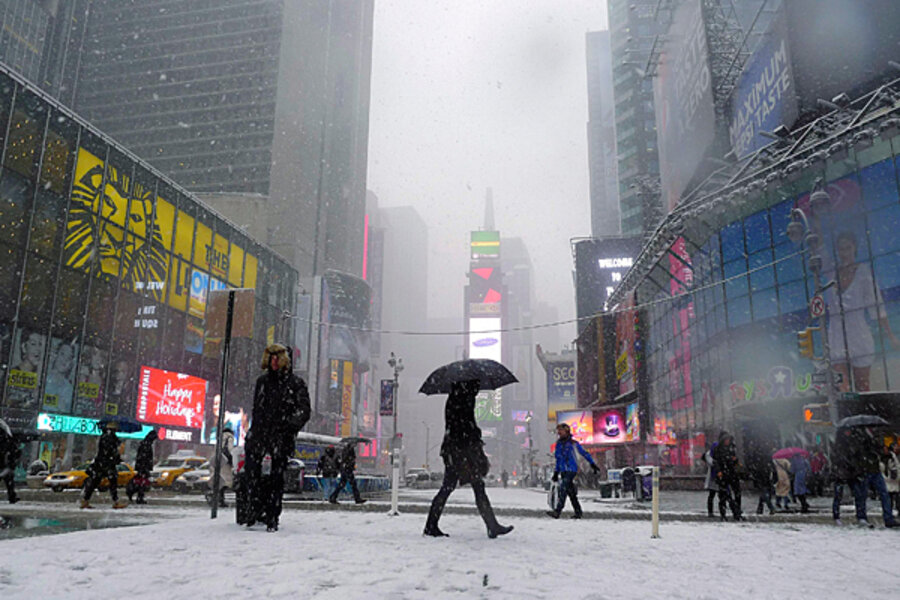Snow in August? It's steamy now, but forecasters see a big winter coming.
Loading...
| New York
Last winter, big cities like New York and Philadelphia saved a lot of money because the Northeast had a snow drought. Not so this winter.
Yes, even while air conditioners are still running, meteorologists are beginning to focus on the long-term winter weather forecast. And, it looks as if the I-95-corridor cities from Washington to Boston will need to make sure the plows are gassed up and rock salt plentiful.
“I think the East Coast is going to have some battles with some big storms,” says Paul Pastelok, Accu-Weather’s lead long-term forecaster in State College, Pa.
However, Mr. Pastelok predicts the battles won’t start until January and then will extend into February. “November in the Northeast could be above-normal temperatures and below-normal precipitation, and December could be a transition month,” he says. “By January and February it’s going to get pretty cold.”
The cold will collide with moisture flowing up the East Coast, he says, resulting in some big snowstorms that could create travel problems, close school systems and create challenges for retailers.
“The good news is that the winter will be good for hats, gloves, scarves, rock salt, and the plowing industry,” says Scott Bernhardt, president of Planalytics, Inc. a business weather intelligence service in Berwyn, Pa. “It’s bad for store traffic, because other than urban areas it’s hard to get around, and restaurants also take a hit because people just don’t go out.”
Mr. Bernhardt says the possibility of a severe winter has yet to hit some of the businesses he talks to. “It’s crazy how many businesses plan off last year,” he says. “And, it’s a no-brainer that it’s not going to be as nice as last year.”
Last year, the worst snowstorm in the Northeast occurred in late October, when some areas got as much as twelve inches of snow. The precipitation came at a time when the trees in most areas still had their leaves. As a result, the snow toppled trees and branches onto power lines, causing massive power outages that lasted as long as two weeks for some homeowners.
The difference this year is that a powerful current that runs along the coast of South America is in the process of shifting from a La Nina, with colder water temperatures, to an El Nino, which results in warmer seawater temperatures in the eastern tropical Pacific. “It changes the weather patterns,” says Pastelok.
Using this summer’s weather as a template, Pastelok looked for what happened in the winter in other years when a weak to moderate El Nino formed. He found a similar pattern in 2002/2003 and 1953/1954.
In those years, storms early in the season drenched the Southeast and then headed out to sea. But, then later in the winter, the snows came.
According to the National Weather Service office in Boston, the winter of 2002/2003 featured below-normal temperatures and above-normal snowfall in many locations. “It was the coldest winter in nine years since 1993-1994,” wrote the Weather Service, noting that it was a “stark contrast” to the prior winter, which was the mildest on record. In 2002/2003, the temperature was 10 degrees colder than 2001/2002.
Pastelok thinks the Southeast could actually get the worst of it this winter. He can envision flooding in the late fall followed by snow and ice this winter all the way down to the Gulf Coast. “Tallahassee could have some snow and ice issues this winter,” he forecasts.
He says the middle of the country is harder to forecast. In general, he anticipates the Central Plains will get drier again. That area has been suffering from a drought but has recently had some precipitation. “We will know better in October,” he says. The weather forecasters will issue a more detailed winter forecast at that point.







